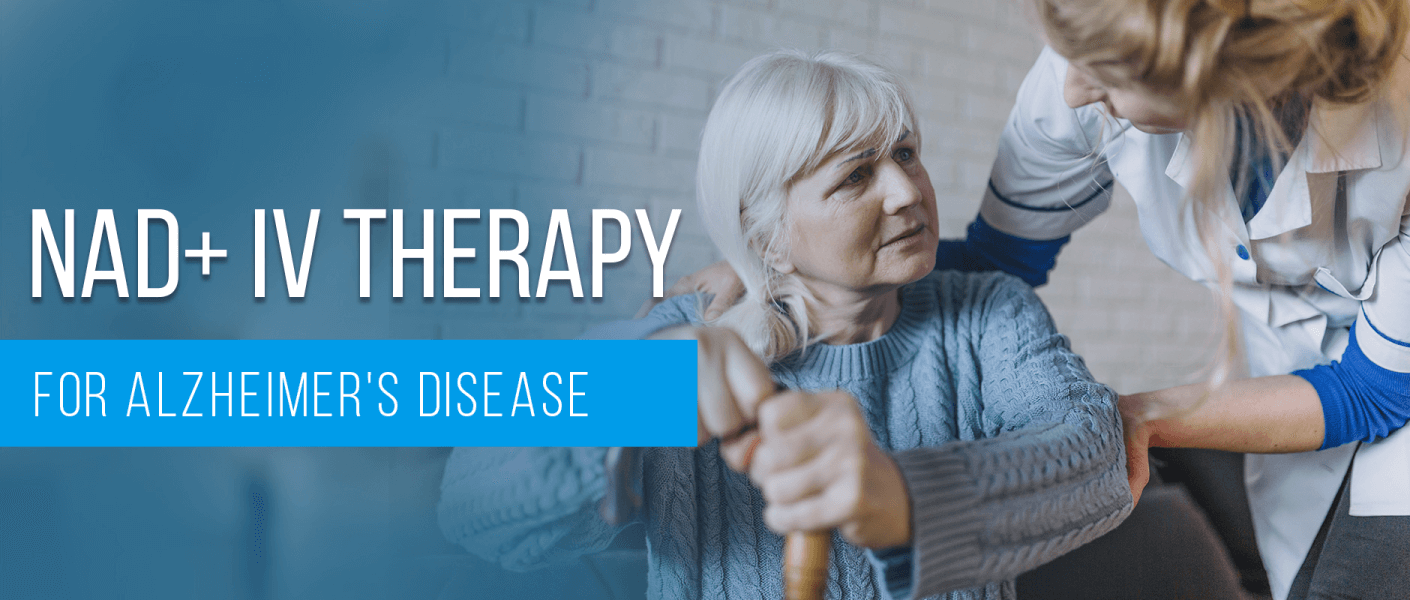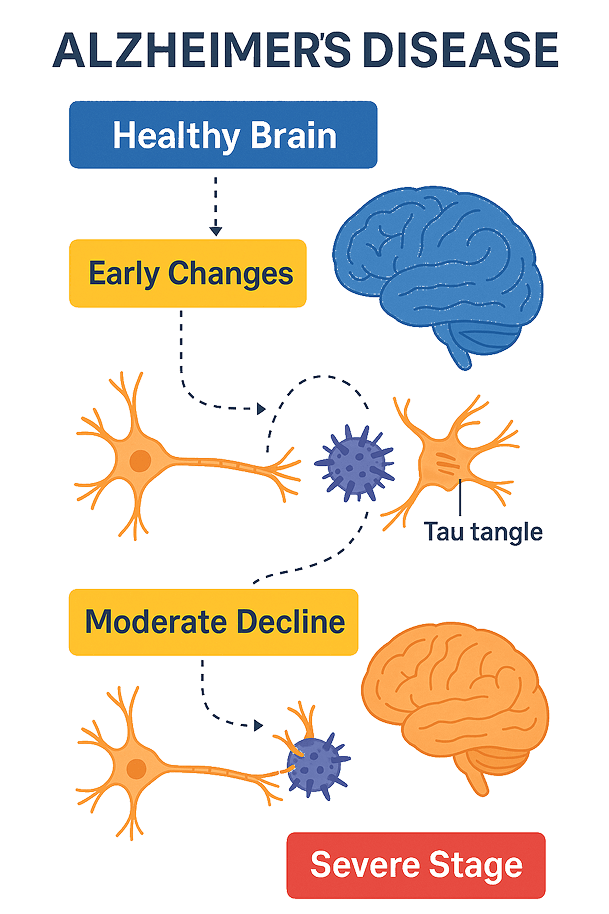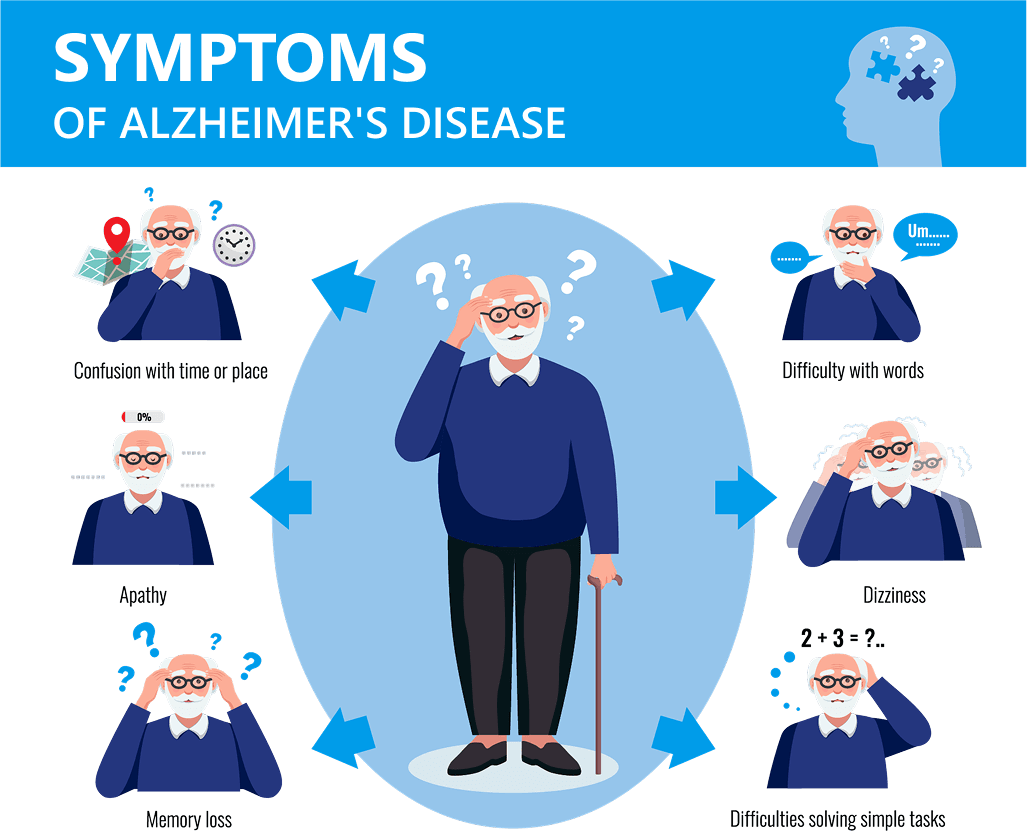
For decades, Alzheimer’s disease has been steadily on the rise, affecting 6.9 million Americans over age 65 in 2024 and projected to reach nearly 14 million by 2060 if the disease follows its current trajectory. Despite massive volumes of research and relentless attempts at managing the condition with pharmaceuticals, Alzheimer’s is still considered an irreversible degenerative disorder.
Learn about Alzheimer’s disease, its signs and symptoms, and exciting new nutritional frontiers like NAD+ IV therapy for Alzheimer’s prevention, management, and reversal.
What exactly is Alzheimer’s Disease?
Alzheimer’s Disease is a progressive neurological disorder that affects memory, thinking, and behavior. It is the most common form of dementia, accounting for 60-80% of cases. Alzheimer’s typically has a gradual onset, with early signs frequently overlooked. More pronounced symptoms of Alzheimer’s typically become evident after the age of 65, although some cases begin much earlier. Two out of three Alzheimer’s patients are female.
Alzheimer’s involves the gradual death of brain cells, driven by the buildup of amyloid plaques and tau tangles – two abnormal protein structures. Amyloid plaques are sticky clusters of protein fragments that accumulate between nerve cells, blocking communication pathways in the brain. Tau is a protein whose fibers become twisted, causing them to build up inside cells and disrupting their ability to transport nutrients and transmit nerve signals. The errant proteins interfere with brain function, often beginning with areas tied to memory, like the hippocampus. The condition gradually branches out to other areas of the brain that control language, reasoning, and bodily functions.
While the exact cause of Alzheimer’s is still a mystery, researchers are making important inroads, many of which lead to nutrition and lifestyle. For example, Alzheimer’s is sometimes called “Type 3 diabetes” due to research that links its progression to insulin resistance and metabolic dysfunction in the brain.

Signs and Symptoms of Alzheimer’s Disease
Alzheimer’s symptoms have a gradual onset. They often begin with lapses in short-term memory, misplacing items like keys or glasses, or struggling to find the right words to express ideas. Planning and problem solving can become a chore, and activities like driving and navigating can become difficult.
As the disease progresses, patients may become disoriented, getting lost in places that were once familiar. They are often able to describe adventures from their distant past in minute detail, while having no recollection of more recent events. They may display personality changes ranging from becoming infantile to displaying irritability and aggression.

Advanced stages of Alzheimers can be heartbreaking for family members as they watch their loved ones progressively decline. Failure to recognize a favorite grandchild, or mistaking a stranger for a relative, are not uncommon symptoms. They gradually lose the ability to communicate and care for themselves as their health continues to decline, and death often comes at the hands of infections or malnutrition.
NAD+ and Cognitive Degeneration
Nicotinamide adenine dinucleotide (NAD) is a critical coenzyme that plays a central role in metabolism. NAD+ is manufactured in the cells from precursors derived from niacin (vitamin D3), and it supports multiple cellular processes. NAD+ is found in every cell in the body, and we would die without it.
NAD+ is directly involved in:
- Energy production
- Mitochondrial support
- DNA genesis and repair
- Immune responses
- Metabolic homeostasis
- Mechanisms of aging
NAD+ levels naturally decline as we age, especially when dietary precursors are depleted or altogether absent, accelerating the aging process and contributing to age-related diseases like cancer, diabetes, cardiovascular disease, and neurodegenerative disorders.
Declining NAD+ has been identified as a key risk factor for Alzheimer’s disease, associated with impaired mitochondrial function, poor DNA repair, and neurodegeneration. Its depletion is also linked to amyloid-beta (Aβ) plaques, and tau tangles. A growing body of research suggests that supplementing with NAD+ may help to prevent, arrest or even reverse Alzheimer’s symptoms.
NAD+ IV Therapy
Your body makes its own NAD+ from dietary precursors related to niacin, such as tryptophan, nicotinamide riboside (NR) and nicotinamide mononucleotide (NMN). Potent dietary sources include: wild-caught sardines, salmon and tuna; red meats like beef, lamb and pork; turkey dark meat; and dairy. But for older adults, eating enough of the right nutrient-dense foods can be challenging.
Nutrient deficiencies are common in older adults due to several key factors:
- Poor appetite
- Dental issues
- Digestive disorders
- Pharmaceuticals
- Reduced sense of taste and smell
- Living alone

NAD’s anti-aging properties provide multiple health benefits that are difficult to achieve through diet alone. While NAD+ precursors can be found in the form of pills and capsules, oral supplements can be difficult to swallow and digest, and people often forget to take them.
Regular NAD+ IV therapy sessions can provide a convenient and efficient way to ensure that you or your loved ones get the nutrients needed to ward off age-related cognitive decline and Alzheimer’s disease.
Get NAD+ IV Therapy for Alzheimer’s in NYC
Keeping up with New York’s bustle and flow can be a challenge for anyone. For older adults, the specter of cognitive decline can mean loss of independence and a downward spiral in quality of life. At Invita Wellness, our mission is to provide lifestyle support to New Yorkers of every age through nutrient IV and injection therapies, cryotherapy, hyperbaric oxygen therapy and more.
To combat aging and enhance your overall health, contact Invita Wellness NYC today, and fight cognitive decline with NAD+ IV therapy.
Get NAD+ IV Therapy for Alzheimer’s in NYC
contact InVita Wellness today
Book Now
456 Broadway 2 Floor, New York, NY 10013, USA
Resources
Alghamdi, Mohammed, and Nady Braidy. “Supplementation with NAD+ Precursors for Treating Alzheimer’s Disease: A Metabolic Approach.” Journal of Alzheimer’s Disease 101.s1 (2024): S467-S477.
https://journals.sagepub.com/doi/full/10.3233/JAD-231277
Li, Feifei, Chou Wu, and Gelin Wang. “Targeting NAD metabolism for the therapy of age-related neurodegenerative diseases.” Neuroscience bulletin 40.2 (2024): 218-240.
https://link.springer.com/article/10.1007/s12264-023-01072-3